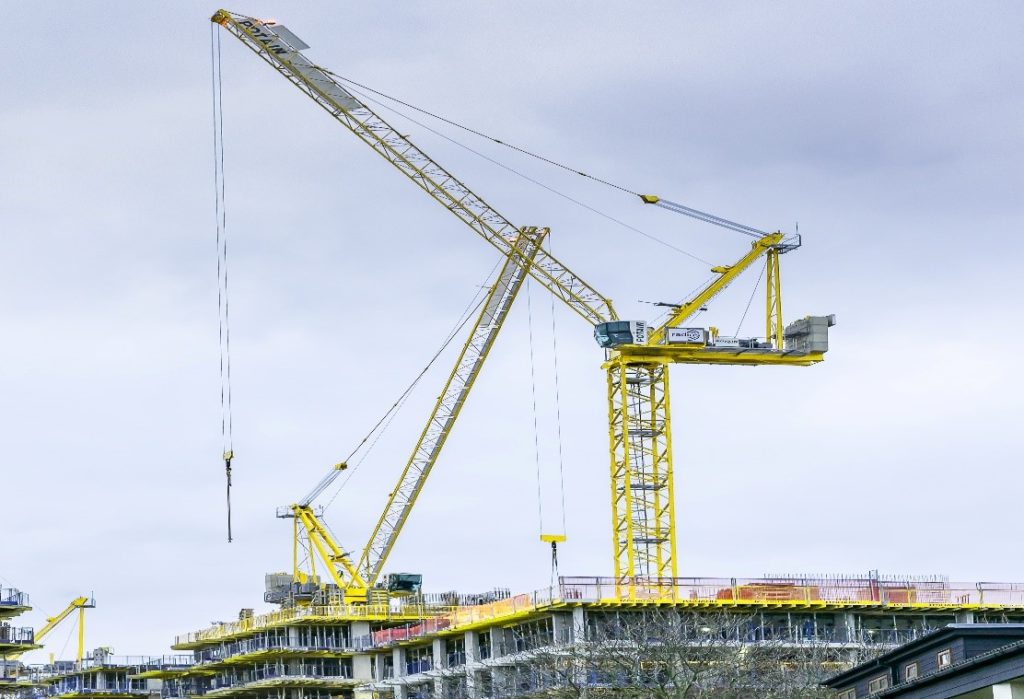8 steps to take when developing a Lift Planning

Average reading time 9 minutes

<8 steps to take when developing a Lift Planning>
Lifting operations are often hazardous processes, due to the involvement of many large machinery and heavy loads. Thus, with lives at stake during such high-risk operations, it is of paramount importance that Lifting Supervisors is confident enough to take charge of the lifting plan, while the lifting team is clear and familiar with the steps present in the Lifting Plan. There are a few steps to consider when drafting a Lifting Plan.
8 Steps to consider when drafting a lifting plan
The Lifting Plan is a set of plans developed for use in any crane lifting operation. Any party who has the expertise and relevant knowledge can create the lifting plan. The items listed below are the points of consideration for the decision maker.
- Weight of load.
- Location of the load’s center of gravity.
- Overall maximum dimensions of the load.
- Location and quantity of approved lifting lugs or lifting points.
- Selection of the appropriate rigging gear to suit lifting points
- Height restriction.
- Risk Assessment.
- Method Statement.
Weight of load
One of the very first things to do prior to lifting a load is determine the total weight of the load. This should be determined in the early planning stages of a lift, as everything else about the overhead lift will need to account for the weight of the load. Examples of the things which are affected includes:
- Equipment being used for the lift
- Type of lifting slings, rigging hardware and below-the-hook devices if required
- Type of sling hitch and sling angle
When calculating the total weight of the load, calculations used must account for every piece of lifting gear involved in the lift. These lifting gears includes:
- Hook block
- Ropes
- Lifting beams
- Shackles, hoist rings, and other hardware
- Lifting slings
Should the calculated weight be measured in excess of 50 tons, or classified as critical (exceeds 90% of the crane capacity chart), a detailed rigging plan, including supporting calculations, will need to be developed for review and acceptance prior to lift.
Location of the Load’s Centre of Gravity
The centre of gravity (CoG) is a theoretical point of an object, which engineers use for convenience in calculations, as the single point where all that object’s weight is concentrated. For a symmetrical object, made of the same material, the centre of gravity is central. However, how often in the world of rigging are we lifting a perfect cube of the same material? Therefore, accurately identifying the location of the CoG is an essential step before lifting the load, as the crane hook or the load connection point is acting as a pivot, and the relationship between it and the CoG of the load being lifted is critical to the stability of the lifting operation.
Overall maximum dimensions of the load
For every piece of equipment used in the lifting process, there is a manufacturer’s specification and limitation guide available. As such these specifications and limitations will always need to be followed where applicable. Where the manufacturer’s specifications are not available, the limitations assigned to the equipment shall be based on the determinations of the most competent and experienced person on the ground. However, such determinations will be documented and recorded. Additionally, load capacities determined by the performance test, recommended operating speeds and special hazard warnings or instructions shall be posted where clearly visible to the operators of cranes and derricks. At no time should a crane or hoist be loaded in excess of the manufacturer’s recommended workload except during performance tests. All capacities shall be clearly indicated on lifting devices. By doing so, the lift operation can reduce the amount of risks involved.
Location and quantity of approved lifting lugs or lifting points
The location, and quantity of the lifting lugs involved needs to consider specific loading angles when used. The location of the lug is critical to the operation as the lug could see a transverse force at the start of the lift, an oblique force as the load is upended followed by an axial force when the load is vertical. Lateral loading is unacceptable but must be considered as an impact factor.
In order to address the risk of a long structure buckling during a tilt-up operation, the numbers and location of lifting lugs will need to be considered in the design and built into the structure to be lifted. In short, a non-routine lift will require extensive planning.
Selection of the appropriate rigging gear to suit lifting points
After calculating and identifying the load’s centre of gravity along with its lifting points, the engineer will need to choose the appropriate rigging gear required to safely lift the load.
Choosing the right rigging gear is important as using the wrong devices and elements used to lift and manoeuvre objects could result in safety hazards. Thus, every piece of lifting equipment needs to be inspected at least once a week. The crane operator should perform daily inspections on all equipment before the crane is put into service to ensure safety.
Height restriction
Limited head height is a common problem that the lifting operation usually encounter. This may be because the crane does not have enough capacity to operate with increased boom length, or there is an obstruction that the load needs to fit under. Thus, it is important that engineers, consider the various other configuration options they have available to circumvent or innovate and work around these restrictions.
Risk Assessment
Since lifting processes are very dangerous, employers are required to assess the health and safety risks that their employees face and to reduce these risks to an acceptable level. They need to identify potential hazards and those at risk, think about the work that is done and identify what may cause or increase the risk of work-related injuries. Consider the causes of the identified hazards, before evaluating and prioritizing the risks, based on the exposure, the probability and the severity of the effect. By doing so, the company will be able to decide on the appropriate steps needed to be implemented to reduce these risks.
Method Statement
A method statement is a type of health and safety document that people usually use for high-risk work. It describes the steps (method) that workers must take to carry out a job safely. Primarily, they are for the benefit of those who will physically be carrying out the work, such as the lifting operator and engineer involved in the process. The document identifies the potential hazard that may arise and outlines the necessary precautions. A method statement includes the process, procedure, engineering data, costing, public and site impact, and preparation requirements for the lifting operation.
These are just some the few steps you can take note of when conducting a lifting operation. To find out the other safety pointers to note and really avoid an accident from happening, do consider the courses that Opus kinetic has to offer below! To ensure safety of equipment and cargo during its transport, do read our blog below too!
Interested to find out more?


